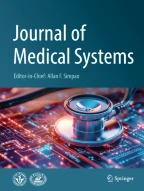Abstract
This paper presents a snore recorder that can separate snores from their delayed mixtures. This is useful to study the snore sounds of individuals when these sounds occur in a normal in-home sleeping environment, where two people are sleeping together and both produce sounds. Based on methods for blind source separation, we give a snore separator that solves the blind delayed source separation problem and provide a performance index to monitor its convergence. The separated snores can be analyzed to detect symptoms of sleep apnea prior to polysomnography or as a monitoring device after polysomnography has been performed. Experimental results show good performance of the snore separator.
Similar content being viewed by others
References
Available at: http://www.sleep-apnea.ab.ca/symptoms.htm.
Shochat et al., The SleepStripTM: An apnea screener for the early detection of sleep apnea syndrome. Eur. Respir. J. 19:121–126, 2001.
Young et al., The occurrence of sleep-disordered breathing among middle-aged adults. New Engl. J. Med. 328:1230–1235, 1993.
Available at: http://www.the-silencer.com/sleep_apnea_snoring.htm.
Available at: http://www.lahey.org/Medical/Otolaryngology/Snoring_SleepApnea.asp.
Available at: http://www.sleep-breathing.bc.ca/osa4.htm.
Available at: http://www.sleepreviewmag.com/Articles.ASP?articleid=S0209F04.
Sola-Soler, J., Jane, R., Fiz, J. A., and Morera, J., Snoring sound intensity study with ambient and tracheal microphones, Proc. 23rd Annu. Int. Conf. IEEE, 2, Engineering in Medicine and Biology Society, pp. 2032–2035, 2001.
Sola-Soler, J., Jane, R., Fiz, J. A., and Morera, J., Pitch analysis in snoring signals from simple snorers and patients with obstructive sleep apnea, 24th Annu. Conf. Annu. Fall Meeting Biomed. Eng. Soc., EMBS/BMES Conf., Proc. 2nd Joint, 2, Engineering in Medicine and Biology Society, pp. 1527–1528, 2002.
Torkkola, K., Blind separation of delayed sources based on information maximization, Proc. IEEE ICASSP, 4, Atlanta, GA, pp. 3509–3513, 1996.
Bell, A. T., and Sejnowski, T. J., An Information maximization approach to blind separation and blind deconvolution. Neural Comput. 7(6):1004–1034, 1995.
Nigam, V., and Priemer, R., Blind delayed source separationw, Electronic Proc. CITSA, Orlando, 2004.
Emile, B., Comon, P., and Leroux, J., Estimation of time delays with fewer sensors than sources. IEEE Trans. Signal Process. 46(7):2012–2015, 1998.
Sola-Soler, J., Jane, R., Fiz, J. A., and Morera, J., Spectral envelope analysis in snoring signals from simple snorers and patients with Obstructive Sleep Apnea, Proc. 25th Annu. Int. Conf. IEEE, 3, Engineering in Medicine and Biology Society, pp. 2527–2530, 2003.
Haykin, S., Unsupervised adaptive filtering, Blind Source Separation, Vol. 1, Wiley Interscience, New York, NY, 2000.
Author information
Authors and Affiliations
Rights and permissions
About this article
Cite this article
Nigam, V., Priemer, R. A Snore Extraction Method from Mixed Sound for a Mobile Snore Recorder. J Med Syst 30, 91–99 (2006). https://doi.org/10.1007/s10916-005-7986-z
Received:
Accepted:
Issue Date:
DOI: https://doi.org/10.1007/s10916-005-7986-z
